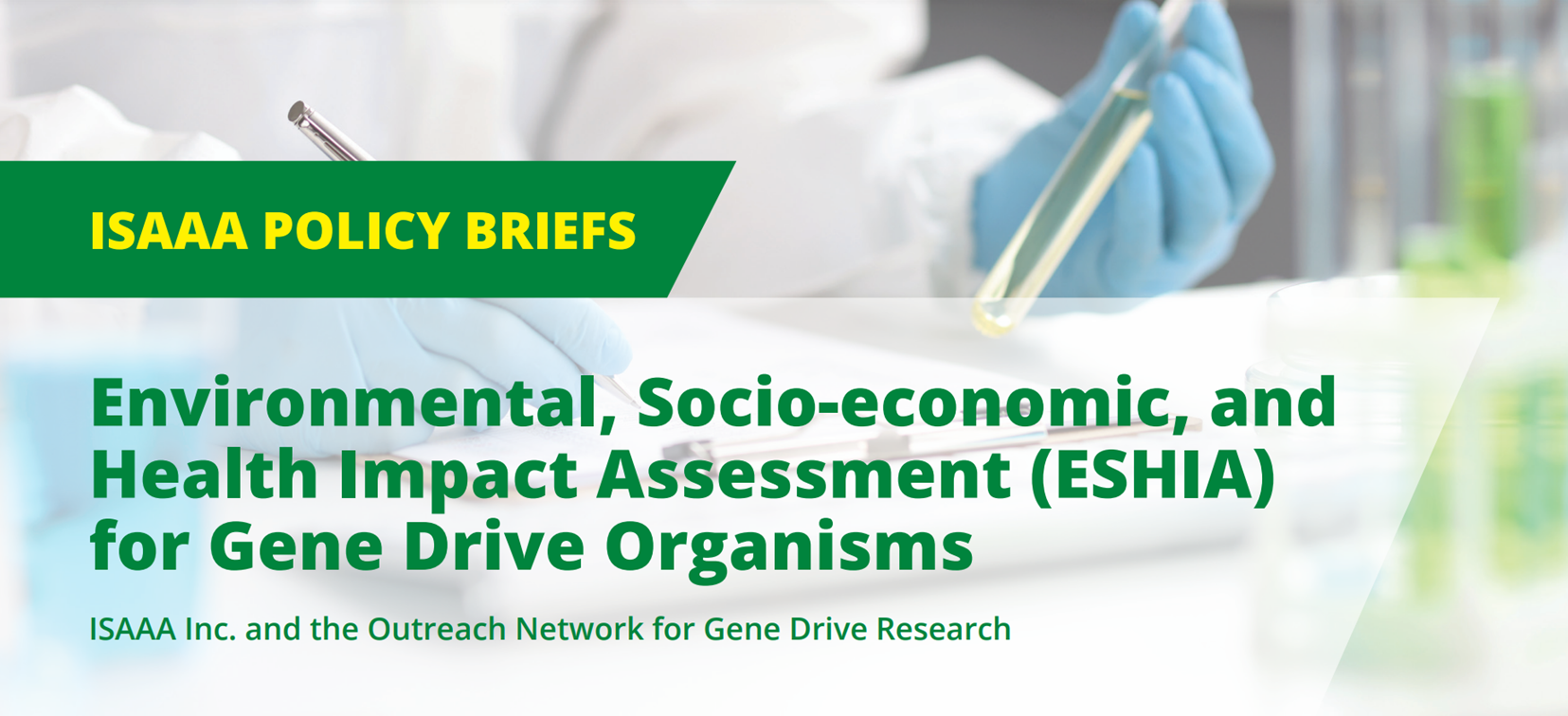Understanding the possible positive and negative impacts that gene drive organisms could have on the environment and people is essential before these technologies can be considered for release. While environmental risks can be evaluated through specific risk assessments, an Environmental, Socio-economic, and Health Impact Assessment (ESHIA) can be useful to assess other dimensions, such as a gene drive organism’s potential consequences on a social, economic and health level.
In collaboration with the Outreach Network for Gene Drive Research, the ISAAA SEAsia Center published a new policy brief on the topic, titled Environmental, Socio-economic, and Health Impact Assessment (ESHIA) for Gene Drive Organisms. The policy brief outlines the characteristics of an ESHIA and provides an overview of the steps typically undertaken during such an assessment, complemented with potential examples tailored to different types of gene drive technologies.

The brief also recommends that decisions regarding the release of gene drive technologies, whether for research or use, consider the findings of impact assessments in addition to the findings of environmental risk assessments (ERAs), as the two are complementary. These assessments should be evidence-based, consistent with the principle of case-by-case assessment and make provisions for the consideration of both risks and benefits as well as public consultation.
The brief is the second of a series that aims to present policy recommendations relating to the development and potential release of gene drive technologies. It was developed following the third instalment of the 2022 Gene Drive Webinar Series – led by the Outreach Network for Gene Drive Research and the ISAAA SEAsia Center – during which speakers discussed the different dimensions of gene drive technologies’ potential impacts and how these can be assessed.
Interested in learning more? Read the full policy brief here.
Recent posts
